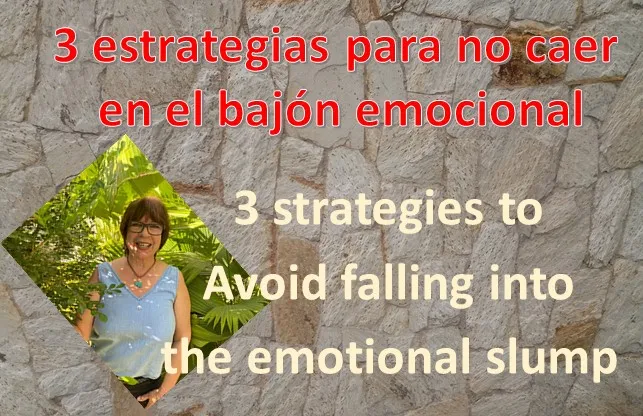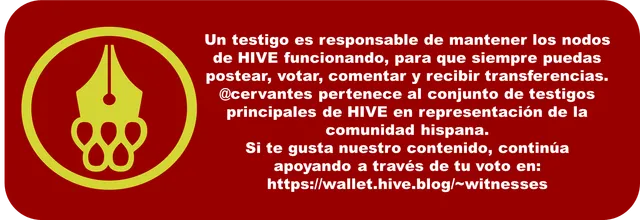
Caer en el bajón significa entrar en ese espacio donde las emociones y los sentimientos te restan tu energía vital, te bajan la vibración y dejas de ser y actuar desde la manera que “normalmente” te define. Hablo de normalidad en el sentido en que cada uno se identifica y se vive en una emocionalidad relativamente constante en su cotidianidad,ejemplo: por naturaleza sientes que eres una persona entusiasta, o alegre, o llena de esperanza. Lo cual no quita que en un momento determinado y por diversas situaciones no sientas un bajón emocional, que también entra dentro lo que llamamos “normalidad”, sencillamente, porque somos humanos y como tales todo lo que nos rodea y sucede genera una emoción que, algunas veces, nos llevan a elevar la vibra y otras nos la baja, sacándonos de la emoción que nos define.
Por eso es importante preguntarnos con cierta frecuencia ¿Qué estoy haciendo por mi bien-estar interior?; ¿contribuyo de manera deliberada a sentirme en bien-estar o por el contrario propicio situaciones que me llevan al mal-estar? Quizás, de entrada, te digas, pero… —¿Cómo voy a hacer algo que me conduzca al mal-estar? Te lo ilustro con una pequeña anécdota:
El día de la madre recibí como regalo, de parte de mi hija, una suculenta y sabrosa parrilla acompañada de un pequeño ramillete de flores silvestres y una bella rosa blanca. Tomando en cuenta que tengo casi tres años que no veo a mi hija, por encontrarse en otro país, su regalo me emocionó mucho y desde el primer momento vi en la rosa una manera de tenerla cerca, ya sabes, esos juegos locos de la mente que te permiten agarrarte de cualquier cosa para hacer más presente lo que físicamente está ausente. Lo cierto es que cuidé la rosa hasta que comenzó a secarse, decidí disecarla, guardarla y tener cerca lo que simboliza para mí.

Cada vez que veo la rosa imagino a mi hija, me sonrío, le mando bendiciones y le doy gracias a Dios porque se que está bien. Ahora fíjate, eso sucede en fracciones de segundos, es como un vuelo rasante, ni se me ocurre detenerme a pensar en significados, ni a hurgar más allá, porque sé, que si me detengo, fácilmente me conecto, comienzo a extrañarla y lógicamente caigo en el bajón de la tristeza.
¿Qué sacar en limpio de este ejemplo?
Que estamos rodeados de objetos y situaciones que activan las emociones, que está en cada uno de nosotros reconocer y establecer los límites a nuestros pensamientos para no propiciar el bajón, sabemos que esa una zona peligrosa y si no actuamos, cada día puede abrir mayores espacios en nuestro ser, quedarse instalada haciendo su trabajo de sentirnos cada día en mayor mal-estar. Partiendo de esta idea te propongo 3 estrategias para no caer en el bajón emocional y si caes, igual te sirven, para agarrar un impulso y salir de él.
To fall into the slump means to enter that space where emotions and feelings subtract your vital energy, lower your vibration and you stop being and acting in the way that "normally" defines you. I speak of normality in the sense that everyone identifies and lives in a relatively constant emotionality in their daily lives, for example: by nature you feel that you are an enthusiastic person, or cheerful, or full of hope. This does not mean that at a certain time and for various situations you do not feel an emotional slump, which also falls within what we call "normality", simply because we are human and as such everything that surrounds us and happens generates an emotion that sometimes leads us to raise the vibe and sometimes lowers it, taking us out of the emotion that defines us.
That is why it is important to ask ourselves frequently: What am I doing for my inner well-being; do I contribute in a deliberate way to feel in good-being or on the contrary, do I propitiate situations that lead me to bad-being? Perhaps, at first, you say to yourself, but... How can I do something that leads me to unwell-being? I illustrate it with a small anecdote:
On Mother's Day I received as a gift from my daughter a succulent and tasty grill accompanied by a small bouquet of wild flowers and a beautiful white rose. Taking into account that I have not seen my daughter for almost three years, because she is in another country, her gift touched me very much and from the first moment I saw in the rose a way to keep her close, you know, those crazy games of the mind that allow you to hold on to anything to make more present what is physically absent. The truth is that I took care of the rose until it began to dry up, I decided to dissect it, keep it and have close to me what it symbolizes for me.
Every time I see the rose I imagine my daughter, I smile, I send her blessings and I thank God because I know she is well. Now look, this happens in fractions of seconds, it is like a gliding flight, it does not occur to me to stop to think about meanings, nor to look further, because I know that, if I stop, I easily connect, I begin to miss her and logically I fall into the downward spiral of sadness.
What can we learn from this example?
That we are surrounded by objects and situations that activate emotions, that it is in each one of us to recognize and establish the limits to our thoughts so as not to propitiate the depression, we know that this is a dangerous zone and if we do not act, every day it can open greater spaces in our being, staying installed doing its job of making us feel every day in greater discomfort. Based on this idea I propose 3 strategies to avoid falling into the emotional slump and if you fall, you can use them to get a boost and get out of it.
3 estrategias para no caer en el bajón
1.- Darnos cuenta que todo comienza con el pensamiento

Los pensamientos están en nosotros todo el santo día, saberlos manejar es una tarea que requiere de consciencia, atención, disposición, intención y una buena dosis de voluntad. No se trata de evadirlos sino de aprender a decidir si en ese momento quieres aceptar ese pensamiento o no, toma en cuenta que hasta que no los confrontes pueden seguir socavando tu estado de ánimo.
Si decides que ese no es el momento para trabajar en esos pensamientos debilitadores, cuando lleguen respira profundamente y busca algo a tu alrededor que te ayude a conectar con un pensamiento más amable que elevé la vibración, si bien no de alegría, porque el ánimo no está por allí, por lo menos que sea de esperanza e incluso aceptación.
Si somos honestos con nosotros mismos sabemos que siempre hay algo de “donde agarrarse” porque la vida está llena de lo bueno y lo no tan bueno y precisamente el gran regalo dado es que en nuestros pensamientos mandamos nosotros. Así que tu decides.
2. Escribe lo que sientes

En esta segunda estrategia, siendo hivers sabes que escribir te abstrae del mundo y te metes de lleno en el tema que estás trabajando por lo que no te es ajeno la función terapéutica de la escritura. Sin embargo, en esta estrategia se trata de escribir sobre esa emoción que estas sintiendo y que te saca de tu estado de bienestar. La idea central es que la escritura sirva para expresar ese sentimiento que ahoga: la impotencia, tristeza, rabia…
Cuando tomamos papel y lápiz, nuestra mente, inmediatamente, se pone en modo análisis. Imagina que empiezas a escribir una carta dirigida a tu mejor amiga o amigo. Expresarlo de manera escrita requiere de procesos mentales que paso a paso van calmando la emoción, entrando en un espacio más equilibrado. Porque, en un primer momento, a medida que escribes vas tomando consciencia de lo que realmente estas sintiendo, en el proceso te detienes a pensar si las palabras que estas utilizando expresan ese sentir y finalmente evalúas si lo que escribiste queda claro para la persona que “supuestamente lo va a leer”.
De esta manera la escritura se convierte en un proceso de catarsis que te ha ayudado a organizar tus pensamientos y posiblemente descubras ¿Qué es lo que te produce tanto malestar? ¿Qué has hecho para mejorar la situación? O incluso darte cuenta si estas estancada en una emoción poco saludable.
3.- El hacer, maravillosa bondad

La tercera estrategia tiene que ver con el hacer. El hacer siempre será una vía para enfocar nuestra atención en algo que nos guste, es tomar la decisión de actuar deliberadamente para no entrar en situaciones que nos puedan producir estados de mal-estar.
Una de las características de los bajones emocionales es ese no tener ganas ni disposición para hacer las cosas y a veces, se termina haciendo solo aquello que es completamente indispensable para otras personas y no porque tengamos deseos de hacerlas. En estos casos la recomendación siempre será buscar la ayuda de profesional.
Ahora bien, si hay un poco de ánimo y buena disposición ponerse tareas diarias de cosas que nos gusta hacer pero que hemos abandonado, puede ser una excelente opción para elevar la vibración y, si a ello le colocas pequeños retos el resultado será mas estimulante.
Comienza realizando una lista de aquellas actividades que disfrutas y asigna una labor para cada día colocándole la hora en que la vas a realizar y todos los detalles que consideres necesarios para hacerla. Dentro de esa lista puedes incluir actividades como: escuchar música, leer, pintar, escribir, cantar, ver películas, cocinar, caminar, sembrar, tejer, bordar, crear un arbolario, hacer cortos vídeos, podcast, en fin, la lista es interminable solo reconoce tus intereses, pon a volar tu imaginación y entra en acción.
Estoy convencida que cuando el hacer ocupa nuestra mente y cuerpo encontramos motivaciones y bienestar exterior e interior alejando de nosotros los bajones vibracionales.
3 strategies to avoid falling into a slump
1.- Realize that it all starts with thought

Thoughts are in us all day long, knowing how to manage them is a task that requires awareness, attention, willingness, intention and a good dose of willpower. It is not a matter of avoiding them but of learning to decide if at that moment you want to accept that thought or not, take into account that until you do not confront them they can continue to undermine your state of mind.
If you decide that this is not the time to work on those debilitating thoughts, when they arrive take a deep breath and look for something around you that will help you connect with a kinder thought that will raise the vibration, if not of joy, because the mood is not that way, at least of hope and even acceptance.
If we are honest with ourselves we know that there is always something "to hold on to" because life is full of the good and the not so good and precisely the great gift given is that we are in charge of our thoughts. So you decide.
2. Write down what you feel

In this second strategy, being hivers you know that writing abstracts you from the world and you get fully into the subject you are working on so you are no stranger to the therapeutic function of writing. However, in this strategy it is about writing about that emotion you are feeling and that takes you out of your state of well-being. The central idea is that writing serves to express that feeling that stifles: helplessness, sadness, anger....
When we take paper and pencil, our mind immediately goes into analysis mode. Imagine you start writing a letter to your best friend. Expressing it in writing requires mental processes that step by step calm the emotion, entering a more balanced space. Because, at first, as you write you become aware of what you are really feeling, in the process you stop to think if the words you are using express that feeling and finally you evaluate if what you wrote is clear to the person who is "supposed to read it".
In this way, writing becomes a process of catharsis that has helped you organize your thoughts and possibly discover what is causing you so much discomfort, what have you done to improve the situation, or even realize if you are stuck in an unhealthy emotion. Or even realize if you are stuck in an unhealthy emotion.
3.- Doing, wonderful kindness

The third strategy has to do with doing. Doing will always be a way to focus our attention on something we like, it is to make the decision to act deliberately in order not to get into situations that can produce states of dis-ease.
One of the characteristics of emotional lows is that we have no desire or willingness to do things and sometimes, we end up doing only what is completely indispensable for other people and not because we have the desire to do them. In these cases the recommendation will always be to seek professional help.
Now, if there is a little encouragement and willingness to put daily tasks of things that we like to do but we have abandoned, can be an excellent option to raise the vibration and, if you put small challenges to it, the result will be more stimulating.
Start by making a list of those activities you enjoy and assign a task for each day by placing the time you are going to do it and all the details you consider necessary to do it. Within that list you can include activities such as: listening to music, reading, painting, writing, singing, watching movies, cooking, walking, planting, knitting, embroidery, creating an arboretum, making short videos, podcast, in short, the list is endless, just recognize your interests, let your imagination fly and take action.
I am convinced that when doing occupies our mind and body we find motivations and external and internal wellbeing, keeping away from us the vibrational lows.
Translated with www.DeepL.com/Translator (free version)
Fuente de imágenes: Rosa imagen archivo personal - 2 - 3 - 4



MIS REDES SOCIALES




Te invito a apoyar este proyecto como witnes y a formar parte de esta gran comunidad uniéndote a su Discord en el siguiente enlace:
Discord de la comunidad Cervantes




